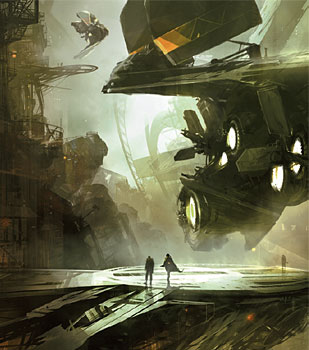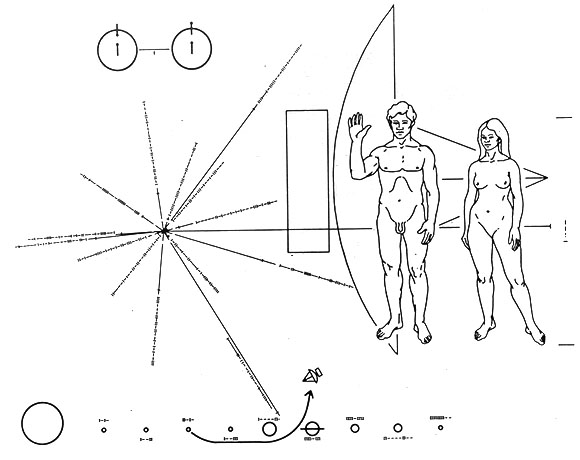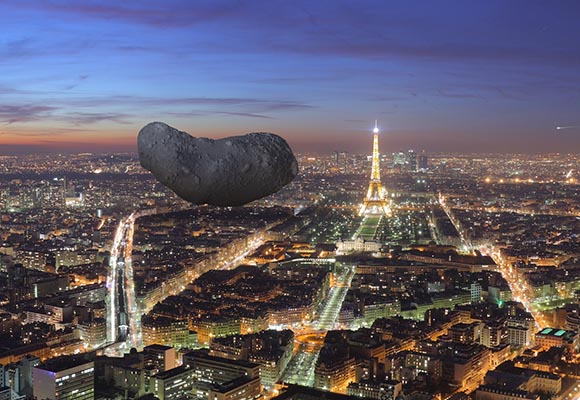The perception of size is a fascinating topic. Humans seem to have a very well developed sense to comprehend the size of objects intuitively. However, that mechanism is heavily skewed towards objects that are roughly the size of humans themselves. We seem to intuitively be able to grasp very fine nuances in the physical dimensions of objects that we can observe in everyday life and grasp with our hands. As soon as we deal with objects that are much bigger (cities, mountains, planets) or much smaller (microbes, molecules, particles) our instinctive feel for size stops working properly. So we can grasp the fine nuance of the difference between a football and a basketball. But we seem no have no problem of putting the Mercury in the same category as Earth. The recent discussions on the status of Pluto are symptoms of our inability to mentally access those objects
Of course when speaking of large or small (or simply yet unseen) objects, we still can use numbers to get an idea of the size of those objects. Our minds are capable to get us where our instincts aren’t able to follow. So scientists who deal with those objects on a daily basis can develop a sense for their dimensions. Still, I believe there is an inherent difference between this mental crutch and a genuine feel.
But there is a different way. Designers, who work visually know very well how to exploit this human sense for dimensions to communicate ideas more effectively. For example, Concept Artists have learned to always include human figures in their drawings. Those figures aren’t characters. Their purpose is to help the viewer to calibrate the scale of the image – something that is especially important in rough, sketchy scribbles.

The purpose of human figures in concept art is to communicate the proper scale of the image.
Similarly, good Information Designers always put their data into context of other data. Data only becomes information when in context of other information, already familiar to the audience. Raw data is shallow and meaningless. Applied to visual information, you arrive at quite the same result – to put familiar objects next to unfamiliar objects as a reference.

A funny reversal of the rule. The plate on the Pioneer Probes shows two humans in front of a simplified schematic of the probe itself. This time, the reference works the other way around. An audience unfamiliar with human beings should be able to get an idea of their size using the space probe as reference.
So you might remember my last post about the asteroid Lutetia. Images of the asteroid itself didn’t communicate properly how frigging huge this asteroid was. Putting it next to the Moon and other asteroids helped a little bit. It created a context for the image and established a hierarchy among those objects. But that hierarchy was still a stand-alone-complex. It didn’t really communicate the size in human terms. So here is a different attempt I experimented with recently. It shows the asteroid Itokawa. It’s a tiny asteroid that was recently visited by the Japanese space probe Hayabusa. I photoshopped the asteroid onto an image of Paris. Using the Eiffel Tower as a reference, I was able to calibrate the size so it’s roughly to scale.

Itokawa in Paris. Click here for huge size.
I used the official Hayabusa images and this breathtaking Photo, which actually is my Wallpaper at the moment.
You should note that there is a lot of stuff scientifically wrong with this picture. First, I did some subtle manipulations to the image of Itokawa, removing some of the harsh shadows. Actually, the real asteroid may even have a slightly different shape. The brightness and the hue of the Asteroid is a complete guess. Official numbers say it has an Albedo of 0.53, around as bright as new concrete.
More importantly, that image could never happen. Even if the asteroid actually fell on Paris, it would never reach the ground in one piece like this. Like the majority of asteroids, Itokawa is actually a so-called “rubble pile”. It is not once piece of solid rock like we often imagine asteroids. Instead, it’s a very loose clump of smaller rocks and dust. Even the smallest disturbance such as tidal forces or the atmosphere would probably blow the asteroid into pieces. I guess some of the pieces would reach the ground… but it would look very different.
Still, I find it quite useful to get an idea of the size of that thing. Keep in mind that this is a tiny asteroid. Check out the recent size comparison chart of Asteroids. Itokawa is just a pixel or two on that image. I might do a few other asteroids at some point for fun. Until then, enjoy!





